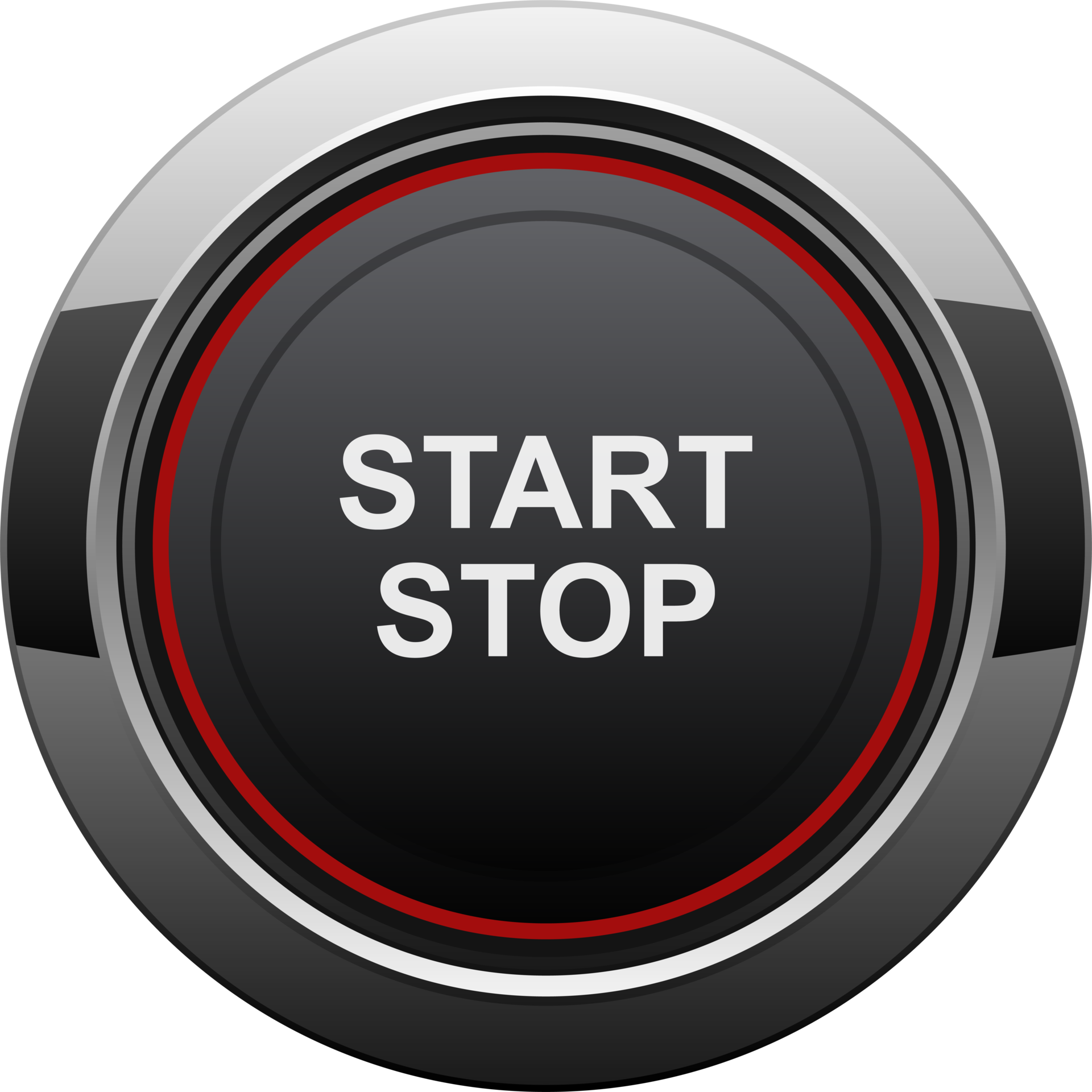Unlocking Your PC's Potential: The Enduring Power Of The Start Button
The "Start" button, that unassuming icon typically nestled in the corner of your computer screen, has been a cornerstone of the Windows operating system for decades. Far more than just a simple button, it serves as the primary gateway to virtually everything on your PC, from launching applications and accessing documents to configuring system settings and shutting down your machine. Its enduring presence, despite numerous Windows iterations, speaks volumes about its fundamental importance to user experience and system navigation.
Yet, for such a ubiquitous element, the Start button can sometimes be a source of confusion or frustration. From questions about its very location to troubleshooting an unresponsive click, or even understanding mysterious background processes named "start," its simplicity often belies a complex underlying system. This comprehensive guide will delve into the multifaceted world of the Start button, exploring its evolution, unraveling common issues, and equipping you with the knowledge to master this essential Windows feature.
Table of Contents
- The Start Button: A Historical Perspective
- Understanding the Windows Start Menu in Modern OS
- Common Start Button Conundrums: Troubleshooting Unresponsiveness
- The Elusive "Start" Background Process: What Is It?
- Customizing Your Start Menu Experience in Windows 11
- Beyond the Click: Advanced Start Menu Functions
- Addressing Legacy Issues: Windows 10 Start Menu and Search
- The Enduring Relevance of the Start Button
The Start Button: A Historical Perspective
The journey of the Start button began with Windows 95, a revolutionary operating system that redefined personal computing. Before its advent, navigating Windows often involved juggling multiple program groups and file managers, a process that could be cumbersome for new users. Microsoft introduced the Start button as a centralized, intuitive access point, a "launch pad" for applications, documents, and system settings. Its initial design was a simple, rectangular button bearing the word "Start," a clear invitation to explore the system's capabilities. Early iterations of Windows, like the ones some users might vaguely recall, emphasized the direct functionality: "Open documents by clicking the start button, and then clicking documents." This straightforward instruction highlighted its primary role as a navigator to your personal files and applications. Over the years, while its core function remained, its appearance and the menu it unveiled underwent significant transformations. The question "Where is the start button, Or is this old information?" sometimes arises from users who might be encountering older systems or simply recalling the visual changes over time. Rest assured, the Start button, in some form, has remained a constant, though its aesthetic and the depth of its menu have evolved dramatically from the classic Windows 95 look to the sleek, centered design of Windows 11. The very notion of "Where to download start menu" underscores a user's frustration when this fundamental component seems to be missing or malfunctioning, highlighting its irreplaceable role.Understanding the Windows Start Menu in Modern OS
In contemporary Windows operating systems, particularly Windows 10 and Windows 11, the Start menu has become a sophisticated hub, far exceeding its original, simpler design. When you "Open the start menu on your Windows 11 PC," you're greeted with a blend of pinned applications, recommended files, and a powerful integrated search bar. This evolution reflects Microsoft's commitment to creating a more personalized and efficient user experience. The integrated search functionality is a prime example of this advancement. Instead of manually navigating through folders, users can simply open the Start menu and begin typing the name of a program, file, or even a web query. This seamless integration allows for quick access to virtually anything on your system or the web. Furthermore, the Start menu offers robust customization options. For instance, the ability to "pin to start" items is a key feature. When you "type the start of a program name into the start menu and right click the match," the "pin to start" option typically appears, allowing you to create a shortcut directly on the Start menu for quick access. This provides a level of personalization that ensures your most frequently used applications are always just a click away, enhancing productivity and streamlining your workflow.Common Start Button Conundrums: Troubleshooting Unresponsiveness
Despite its robust design, the Start button isn't immune to issues. One of the most frustrating problems users encounter is an unresponsive Start button. Phrases like "My start button has become unresponsive, Everything else seems to work but the start button, I've power cycled but no luck, How can I fix this?" are common laments across user forums. This issue can stem from various sources, including corrupted system files, conflicts with third-party software, or even a glitch in a recent Windows update. When the Start button fails, it can feel like your entire system is locked, as this central access point is suddenly gone.Initial Troubleshooting Steps for an Unresponsive Start Button
When your Start button goes dark, a systematic approach to troubleshooting is essential. Before diving into more complex solutions, consider these initial steps: * **Restart Your PC:** While seemingly simplistic, a full system restart (a "power cycle") can often resolve temporary glitches. This clears out temporary memory and reloads all system processes, which can fix minor software hiccups affecting the Start button. * **Check for Windows Updates:** Outdated or corrupted system files can cause the Start menu to malfunction. Ensure your Windows operating system is up to date. Navigate to Settings > Windows Update and check for any pending updates. Installing these can often resolve underlying system instabilities. * **Run System File Checker (SFC) and Deployment Image Servicing and Management (DISM):** These command-line tools are invaluable for repairing corrupted Windows system files. Open Command Prompt as an administrator and run `sfc /scannow`. If that doesn't work, follow up with DISM commands like `DISM /Online /Cleanup-Image /RestoreHealth`. These tools scan for and repair damaged files that might be preventing the Start button from functioning correctly. * **Create a New User Profile:** Sometimes, the issue is localized to your user profile. Creating a new local user account and logging into it can help determine if the problem is system-wide or specific to your profile. If the Start button works on the new profile, you might consider migrating your data to the new account.Advanced Fixes: Reinstalling the Start Menu
In more severe cases, particularly if the Start menu has been "uninstalled accidentally" or become deeply corrupted, a more drastic measure might be necessary: reinstalling the Start menu components. As indicated in the data, "if you've uninstalled the start menu accidentally and you want it to be reinstalled, you can do so by using powershell command." This process typically involves running specific PowerShell commands as an administrator to re-register the Start menu package within Windows. While the exact commands can vary slightly depending on the Windows version and the nature of the corruption, this method effectively rebuilds the Start menu, often resolving persistent issues that simpler troubleshooting steps cannot address. It's a powerful tool, but one that should be approached with caution, ideally after backing up important data.The Elusive "Start" Background Process: What Is It?
A peculiar query that sometimes surfaces is "Can someone tell what is this background process called start, it keeps popping up every time I end it." This is an interesting point because, in a typical, healthy Windows environment, a core system process directly named "start" that repeatedly pops up after being ended is unusual. While the Start menu itself is powered by various background processes (like `explorer.exe`), a standalone process simply called "start" is not a standard Windows component. This behavior could point to a few possibilities: * **Misidentified Process:** The user might be misinterpreting a process name or a child process of another application. Task Manager provides detailed views, allowing users to see the full path of an executable. Investigating the file location of this "start" process could reveal its true nature. * **Third-Party Application:** It's possible a third-party application, perhaps one designed to customize the Start menu or provide quick launch features, has a component named "start.exe" that is misbehaving. Such applications might be designed to restart automatically if terminated. * **Malware or Adware:** Unfortunately, persistent, unknown processes are a classic symptom of malware or adware infections. Malicious software often disguises itself with generic names or tries to mimic legitimate system processes to avoid detection. If this "start" process is unfamiliar and persistent, a thorough scan with reputable antivirus and anti-malware software is highly recommended. * **Corrupted System File:** In rare cases, a corrupted system file might manifest in an unusual process name or behavior. Running SFC and DISM scans (as mentioned earlier) could help identify and repair such corruption. Understanding the context of this "start" process is key. Users should always be wary of processes they don't recognize, especially if they exhibit unusual behavior like repeatedly restarting after being terminated.Customizing Your Start Menu Experience in Windows 11
Windows 11 introduced a significant redesign of the Start menu, moving it from the traditional left-hand corner to a default centered position on the taskbar. This change, along with others, sparked considerable discussion among users. However, Microsoft has also provided various customization options to tailor the Start menu to individual preferences, enhancing the overall user experience. One notable change, though not directly related to the Start menu itself but to the broader user interface, is that "As from Windows 11 version 22H2, it is possible to change the welcome screen background." This highlights Microsoft's ongoing efforts to offer more personalization across the entire Windows environment. Regarding the Start menu specifically, "Resizing horizontally the start menu in Windows 11 does have some customization options available." While the vertical size is largely dynamic, users can often adjust the width of the pinned apps section, allowing for more or fewer rows of icons to be displayed at once. Furthermore, for those who prefer the classic layout, "If you want to move the start and taskbar shortcuts back to the familiar left," Windows 11 provides an option in the Taskbar settings to align the taskbar icons and Start button to the left, mimicking the Windows 10 experience. This flexibility ensures that users can adapt the interface to their comfort level, whether embracing the new centered design or reverting to a more traditional layout. These customization features underscore the importance of the Start button as a highly personalizable entry point to the Windows ecosystem.Beyond the Click: Advanced Start Menu Functions
The Start button's utility extends far beyond merely launching applications. It's a gateway to critical system functions, recovery options, and program management, making it an indispensable tool for both casual users and power users alike.Starting Windows in Safe Mode
One of the most crucial advanced functions accessible via the Start menu is the ability to boot your computer into Safe Mode. Safe Mode is a diagnostic startup mode that starts Windows with a minimal set of drivers and services, which is invaluable for troubleshooting system problems, removing malware, or resolving driver conflicts. The provided data hints at this process: "Therefore, to start the computer in safe mode, see the steps below, Please open the windows recovery environment using the steps below, Press and hold shift, and click the." The most common method to access Safe Mode through the Start menu involves: 1. Clicking the **Start** button. 2. Clicking the **Power** icon. 3. Holding down the **Shift** key on your keyboard while clicking **Restart**. This action will take you to the Windows Recovery Environment (WinRE), a dedicated troubleshooting environment. From WinRE, you can navigate to Troubleshoot > Advanced options > Startup Settings, and then choose to restart into Safe Mode. This process, initiated by a simple Shift-click on the Restart option within the Start menu's power options, highlights the Start button's role as a portal to deep system diagnostics.Managing Startup Programs
Another common user query revolves around controlling which applications launch automatically when Windows starts. The data mentions, "I would think there would be a simple check box under general settings to have outlook start when windows starts, but I cannot find it." While some applications, like Outlook, do offer an in-app setting to control their startup behavior, the most comprehensive way to manage all startup programs is through the Windows Task Manager, which is easily accessible via the Start button's context menu (right-click the Start button) or by searching for it in the Start menu. In Task Manager, navigating to the "Startup" tab provides a clear list of all applications configured to launch with Windows. Users can enable or disable these programs with a simple click, significantly impacting system boot times and overall performance. This centralized control, facilitated by the Start menu's quick access to Task Manager, empowers users to fine-tune their system's startup process, preventing unnecessary applications from consuming resources from the moment their PC boots up.Addressing Legacy Issues: Windows 10 Start Menu and Search
While Windows 11 has its own set of unique characteristics, it's important to acknowledge that its predecessor, Windows 10, also faced its share of Start menu and search-related challenges. The sentiment "My windows 10 start menu and search box stopped working a couple of days ago. Have tried all the fixes I can find, short of reinstalling windows 10. I can really do without." perfectly encapsulates a common frustration experienced by many Windows 10 users. These issues, often manifesting as an unresponsive Start button or a non-functional search bar, were widely reported, particularly after certain Windows updates. The underlying causes were diverse, ranging from corrupted user profiles and system files to conflicts with third-party software or even issues with specific Windows services. The troubleshooting steps for Windows 10 were largely similar to those for Windows 11: running SFC and DISM scans, creating new user profiles, and, as a last resort, using PowerShell commands to re-register or reinstall the Start menu components. The sheer volume of users experiencing these problems, as indicated by "80 other people had the same question" regarding a 2017 query, underscores the widespread nature of these legacy issues. While Microsoft has continually worked to stabilize these components, the historical context reminds us that even fundamental parts of the operating system can occasionally falter, requiring users to employ various troubleshooting techniques to restore full functionality to their vital "start" experience.The Enduring Relevance of the Start Button
From its humble beginnings as a simple launch pad in Windows 95 to its current role as a sophisticated, customizable hub in Windows 11, the Start button has consistently proven its enduring relevance. It remains the most recognized and frequently used interface element in the Windows operating system, a testament to its intuitive design and critical functionality. Whether you're a new user trying to "open documents by clicking the start button" for the first time, or an experienced IT professional troubleshooting an unresponsive "start" process, this iconic button is central to the Windows experience. Its evolution reflects the changing landscape of personal computing, adapting to new user needs and technological advancements while retaining its core purpose: providing a single, unified point of access to your entire digital world. Despite occasional glitches or redesigns that might initially disorient users, the Start button continues to be the reliable anchor of the Windows desktop, empowering users to navigate, customize, and control their PCs with unparalleled ease. Its importance cannot be overstated; it is, quite simply, where everything "starts."Conclusion
The Start button, far from being a mere relic of past Windows versions, continues to be the beating heart of the operating system. We've journeyed through its rich history, explored its modern functionalities in Windows 10 and 11, and delved into common issues like unresponsiveness and mysterious background processes. We've also highlighted the critical troubleshooting steps, from simple restarts to more advanced PowerShell commands, and examined the extensive customization options that allow you to tailor your Start menu experience. Understanding the Start button's nuances, from its role in launching applications and documents to its gateway function for safe mode and system settings, empowers you to take full control of your PC. It's a testament to good user interface design that a single button can encapsulate so much functionality and remain so indispensable. Do you have a favorite Start menu customization tip? Or perhaps a troubleshooting success story? Share your insights and experiences with the Start button in the comments below! Your contributions can help others master this essential Windows feature. For more in-depth guides on optimizing your Windows experience, be sure to explore other articles on our site.- Sasha Prasad
- Clint Eastwood On Trump 2024
- Amy Corenswet
- Roman And Sharon
- Trey Yingsts Partner Who Is The Man Behind The Journalist

willSub - Staffing Made Simple

Start and stop engine button clipart design illustration 9380395 PNG

Start to V hay V-ing? Cấu trúc Start trong tiếng Anh